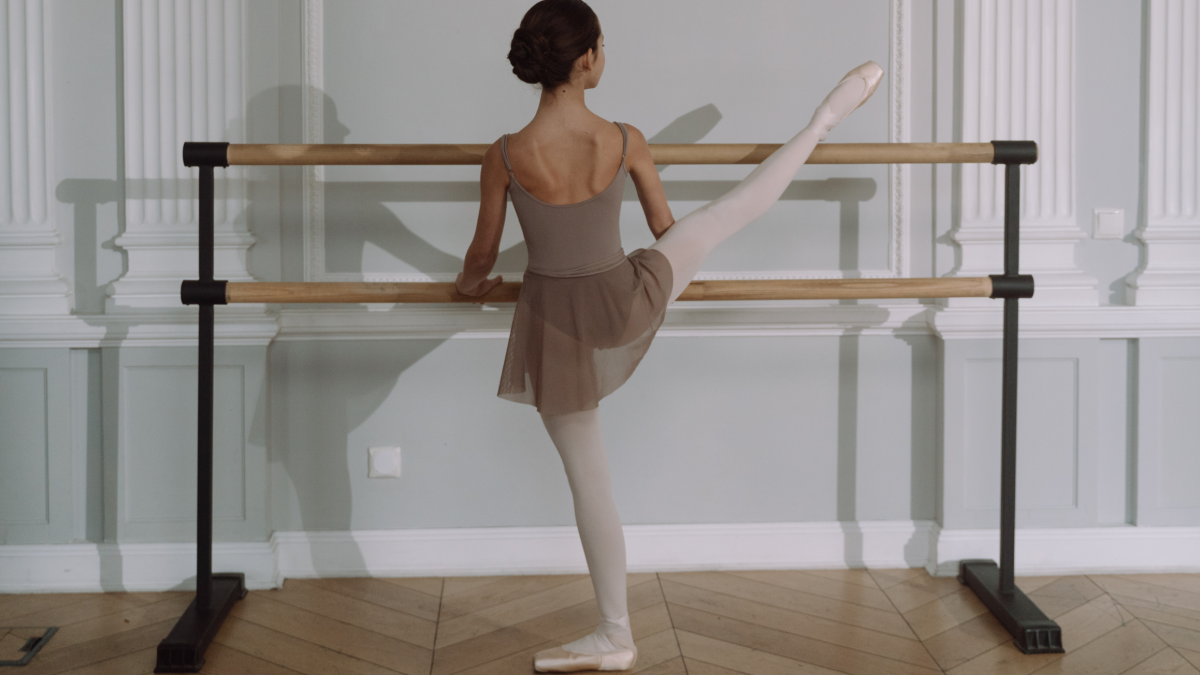More is Not Always Better: A Guide to Load Management for Adolescent Dancers

As adolescent dancers work hard to improve their dance skills, the temptation to train harder and longer becomes overwhelming. But here's the truth that every young dancer and dance parent needs to hear: MORE IS NOT ALWAYS BETTER. Smart load management is the secret weapon that separates dancers who thrive from those who burn out or get injured.
Load management isn't about limiting potential—it's about unlocking sustainably.
Understanding Load in Dance Training
What is "load" in dance?
Load encompasses everything your dancer's body experiences:
Class hours and intensity
Rehearsal demands
Cross-training activities
Performance schedules
Stress from school
Social life/pressure
Competition pressure
For adolescent dancers, this becomes particularly complex because their bodies are still developing while facing increasingly demanding training and rehearsal schedules.
The Adolescent Dancer's Unique Challenges
Growing bodies. Growing demands.
Adolescent dancers face a perfect storm of challenges:
Growth spurts that temporarily affect coordination and strength
Hormonal changes impacting recovery and mood
Academic pressure adding mental and time stress
Social dynamics within competitive dance environments
Increased training intensity as they advance levels
The capacity vs. demand equation
Think of your dancer's body like a bank account. They start with a certain amount in the bank account. Classes, rehearsals and other activities are stressors (withdrawals from the bank account), while rest and recovery are deposits. When withdrawals consistently exceed deposits, we get injured, burned out, or plateau in progress. The amount that was in the bank account to start with can be increased with proper strength and conditioning. This allows dancers to tolerate more stressors before getting injured.
Red Flags: When Load Becomes Too Much
Watch for these warning signs:
Persistent fatigue that doesn't improve with rest
Declining performance despite increased training
Frequent minor injuries or nagging ones that won’t heal
Changes in mood, motivation, or sleep patterns
Increased illness frequency
Loss of joy in dancing
Smart Load Management Strategies
1. Periodization for Young Dancers
Periodization is not frequently used in the dance world. These are commonly used concepts in sports that ensure athletes are at their peak performance at the right times. However, this is slow to spread into the dance world. Just like elite athletes, adolescent dancers benefit from planned training cycles:
Base building phases: Focus on technique and conditioning
Intensity phases: Competition prep and performance seasons
Recovery phases: Active rest and cross-training
Growth accommodation: Reducing load during growth spurts
This is a very simplified list of the phasing and tapering that can be used in dancers’ schedules. They can be tricky to implement with performances or competitions that are close together, but shortening the phases during these times is still helpful so dancers still get recovery between intense phases.
2. The 10% Rule (Modified for Dance)
Increase training volume by no more than 10% per week. For dancers, this might mean:
Adding one extra class per week, not three
Gradually increasing rehearsal hours for performances
Slowly building pointe work time
Following an appropriate return-to-dance protocol after an injury, not jumping back into a full schedule
*This is tricky when it comes to summer dance intensives. Many dancers go from having several weeks off to doubling or tripling their normal training hours. This is where doing strength training in the weeks leading up to a summer intensive can be very helpful. It increases the dancer’s capacity before they hit the ground running.
3. Quality Over Quantity
One focused hour of training beats three distracted hours
Perfect practice makes perfect—rushing through combinations builds bad habits
Mental engagement is as important as physical effort
4. Recovery is Part of Training
Sleep: 8-10 hours for adolescents (non-negotiable!)
Nutrition: Fuel for performance and recovery. Underfueling is way too common in the dance world. Snacks during or between classes and rehearsals are crucial.
Active recovery: Gentle movement on rest days
Mental breaks: Time away from dance-related activities
Practical Implementation for Dance Families
For Dancers:
Keep a simple training log noting energy levels and how you feel
Communicate honestly with teachers about fatigue, discomfort, or pain
Embrace rest days as performance enhancers, not obstacles (and actually use them as a rest day, not a time to go move in the studio by yourself)
Focus on one major goal per season
For Parents:
Support your dancer's communication about their body
Resist the urge to add "just one more" class or workshop when their schedule is already full
Model healthy attitudes about rest and recovery
Trust the process—progress isn't always linear
General rule about weekly dance hours for adolescents: the number of dancing hours in a week should be no more than a dancer’s age in years (i.e. a 12 year old dancer can be safely dancing up to 12 hours per week, which includes rehearsals, classes, and workshops)
When to Seek Professional Help
Consider consulting a dance physical therapist when:
Your dancer experiences persistent pain or discomfort
Performance plateaus despite increased training
You're unsure about appropriate training loads
Planning return from injury
Preparing for intensive programs or competitions
The Long Game
Remember: we're building dancers for life, not just for next week's competition or performance. The habits and attitudes toward training that adolescent dancers develop now will serve them throughout their careers—whether that's as professionals, teachers, or lifelong dance enthusiasts.
Smart load management isn't about being cautious; it's about being strategic. It's the difference between a shooting star that burns bright and fast, and a steady flame that illuminates a long, successful dance journey.
Your Next Steps
Assess current load: Look honestly at your dancer's weekly schedule
Identify one area where load could be better managed
Start small: Make one sustainable change this week
Monitor and adjust: Pay attention to how your dancer responds
Remember: The goal isn't to train as much as possible—it's to train as smart as possible.
I have read and agree to the terms & conditions. We will not spam you.
 Dr. Chelsea Moehlenbrock
Dr. Chelsea Moehlenbrock 